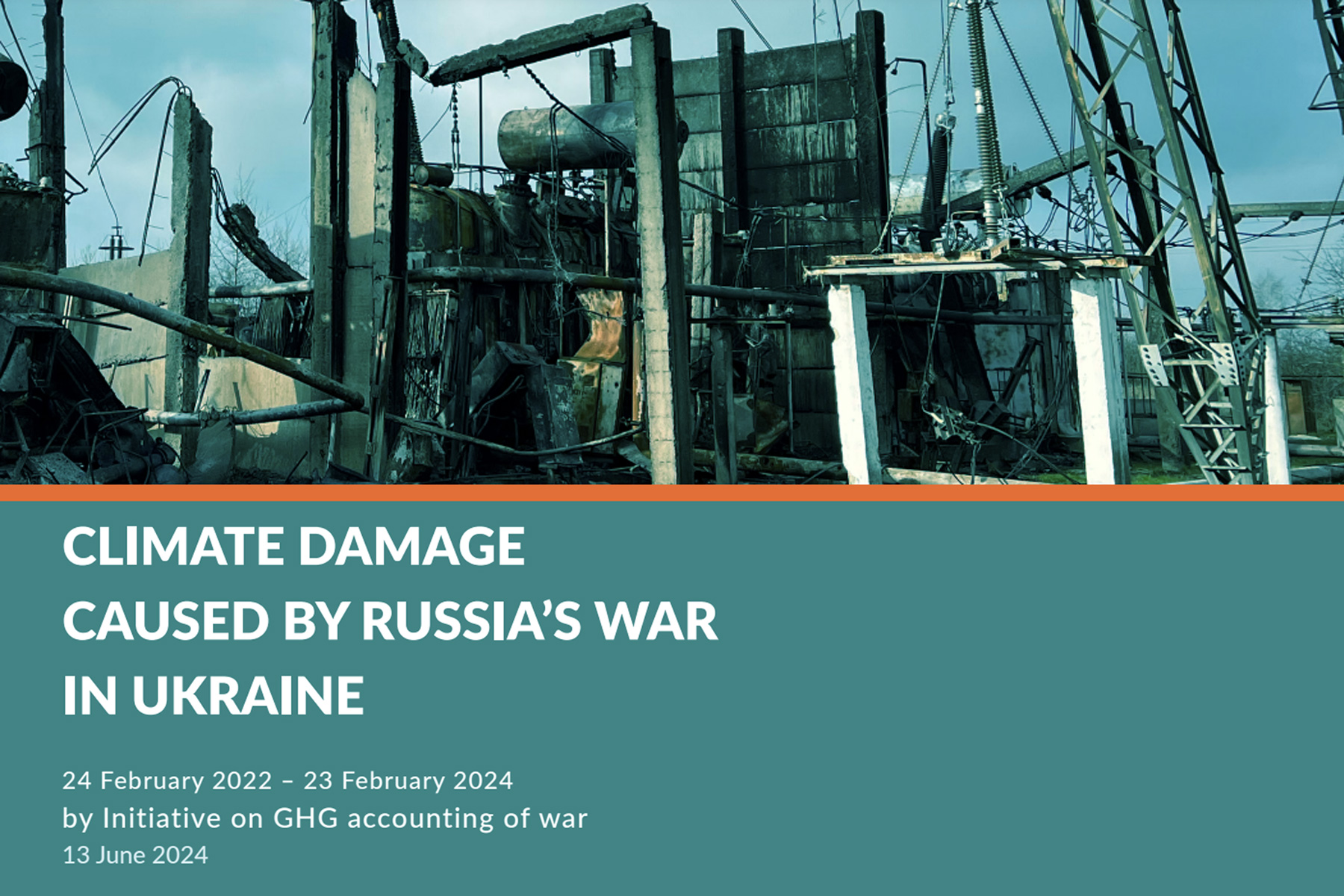The total climate damage caused by the russian federation in two years of full-scale invasion of Ukraine amounts to $32 billion. This data comes from the updated assessment of the Initiative on Greenhouse Gas Accounting of War, presented at the Ukraine Recovery Conference in Berlin.
According to the study, the first 12 months of Russia’s full-scale invasion of Ukraine led to the emission of 120 million tons of carbon dioxide. However, in the 24 months since the invasion emissions have significantly increased to 175 million tons of carbon dioxide. This exceeds the annual emissions of a highly industrialized country like The Netherlands, putting 90 million new petrol cars on the road, or building 260 coal-fired power units of 200 MW each.
“While the world is struggling to reduce carbon emissions to avoid the climate crisis, this act of Russian aggression leads to significant more emissions. And over a third of those emissions happened outside Ukraine’s borders, proving that the environmental impact of Russia’s war does not have borders”, – says Lennard de Klerk, lead author of the report.
According to experts, the impact of the war on the climate intensifies each month due to military actions, fires, loss of carbon reserves, destruction of infrastructure, and other direct and indirect impacts. Large-scale attacks on Ukraine’s electrical grid have led to many uncontrolled leaks of SF6 – a greenhouse gas more harmful than carbon dioxide, methane, and nitrous oxide.
“Warfare contributes to almost one third of the assessed climate damage, as military operations require huge volumes of equipment, ammunition and explosives, which are very carbon-intensive to manufacture, as well as large volumes of fuel, which result in indirect and direct GHGs emissions. The climate impact of military supply chains is also understudied, and the actual climate damage could be even higher”, – comments Mykola Shlapak, co-author of the report.
Experts note that Russia will continue to harm the climate even after the war ends, as the reconstruction of damaged and destroyed infrastructure will be a significant source of emissions. These emissions are largely associated with the production of cement and steel and are expected to amount to up to 56 million tons of carbon dioxide.
This is the fourth iteration of the study on the impact of the war on the climate conducted by the Initiative for Greenhouse Gas Emissions Accounting from War in cooperation with the Ministry of Environmental Protection and Natural Resources of Ukraine and NGO Ecoaction. Download the full report: Climate Damage Caused by War 24 months EN (PDF)
The study was made possible with the support of the European Climate Foundation (ECF), the Initiative for the Development of Environmental Policy and Advocacy in Ukraine (EPAIU), and the German Federal Ministry for Economic Affairs and Climate Action through the International Climate Initiative (IKI).


A very serious crime against current and future generations